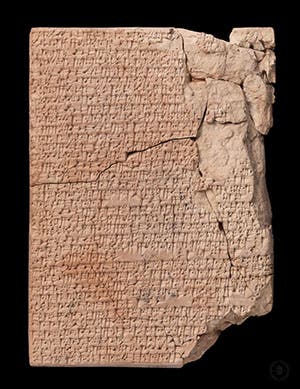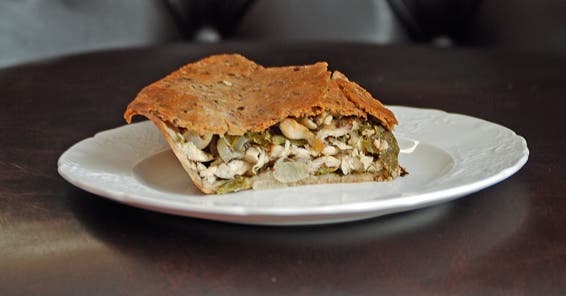While many people are probably consulting Google these days with searches for “easy turkey dinner” or “last minute side dishes”, it’s pretty safe to say there’s no shortage of websites offering answers to those queries. But there is a shortage of recipes thousands of years old. The Yale Babylonian Collection now allowed us to take dinner as humans did in the cradle of civilization: in Babylon.

The collection boasts the world’s oldest known cookbooks: three Akkadian clay tablets that date to about 1750 B.C. and contain recipes for meat and vegetarian dishes, including an assortment of stews. Wait, you mean these are 3750 year old recipes? You betcha! Sure, you might have some trouble going through the cuneiform writing, but thankfully, modern interpretations are available online.
Here’s just a few samples:
Meat with Wild Licorice: ingredients – wild licorice (Glycyrrhiza glabra), asafoetida, garden cress (but possibly watercress), cumin, zest of citron, and water. The recipe states to boil six liters of water with wild licorice and cook for a long time. Then it reads that the citron zest should be added and cooked until it is reduced to 1 liter. Then the liquid is strained and meat is added and cooked.
I’m gonna be honest with you, I’ve never yearned for meat with wild licorice until now! You could use any type of meat, although it seems likely that the Babylonians used sheep or goats. There is a bit of uncertainty regarding the “zest of citron”, but it does make absolute sense that they used that as opposed to other similar options. If that’s not your thing, then perhaps…

Wild-Fowl Pie: Ingredients and method. Wild-fowl, water, milk, salt, fat, cinnamon, mustard greens, shallots, semolina, leeks, garlic, rye flour (or a mix), brine, roasted dill seeds, mint, wild tulip bulbs. (Method is for a store-bought bird. If a whole fresh or wild bird is used, see notes.) Salt birds inside and out and place in pot where water and milk has been warmed. When it comes to a boil add a mash of shallots, semolina, leeks, garlic and enough water to moisten the mash. Cook until the meat is soft enough to easily debone. When meat is done, remove from pot and let cool enough to handle. Lightly pan or oven roast some dill seeds. When done, remove from flame and set aside.
If you’re a vegetarian, then fret not – we’ve got you covered:
Ninda-gal, Bread with Onion Seeds, Sumac and Saffron.Ingredients and method: Spelt flour; semolina, a coarse mixture of onion seeds, sumac and saffron and salt. No directions for water or milk are included, but obviously moisture is needed. Many different shapes of bread are possible. If it were a flatbread, it could be a large, injera-type bread on which other food items are placed. Sigrist does specify that it is a “large bread”. Alternatively, it could be a cured sourdough, allowed to rise, akin to a large modern loaf. (Notes 18 & 19).
There is another interesting recipe, which is vegetarian… except that they use blood, for flavoring. If you want to recreate this 3750 year old recipe but keep it vegetarian, you can definitely do it without the blood:
Turnips (or Roasted Barley) with herbs – Ingredients and method: Prepare water, add fat, turnips (or roasted barley). Add a chopped mix of shallots, arugula, and coriander that have been mixed with semolina or other flour and moistened with blood. Cook until done. Add mashed leeks and garlic.
Bon appetit!






